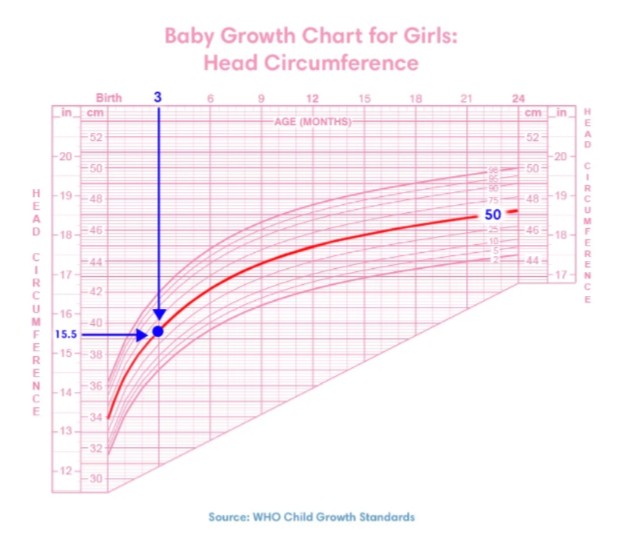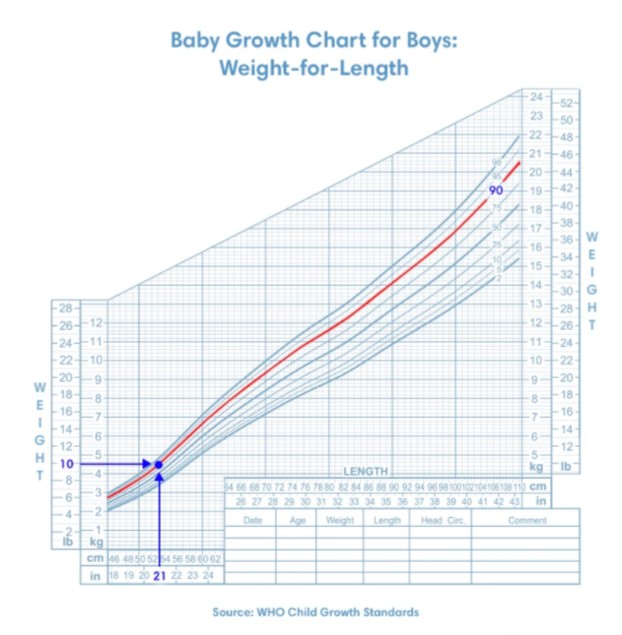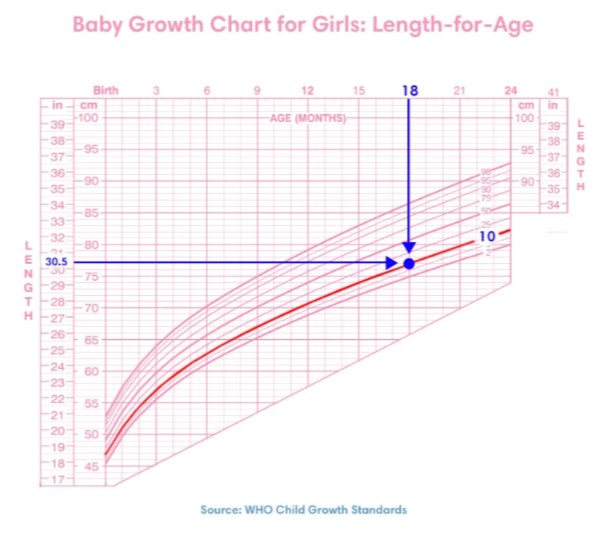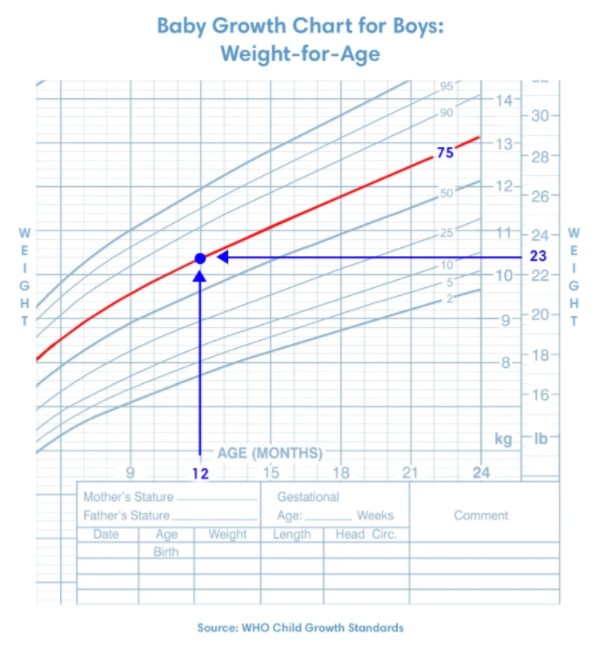Babies come in all shapes and sizes, each growing at their own pace. During regular health checkups, healthcare providers take specific measurements to ensure your baby is developing well. But do you know how to interpret the numbers on the baby growth chart?
What is the Baby Growth Chart?
It’s an important tool to check your little one’s overall health, containing a series of percentile curves that closely track how your baby grows and develops compared to other children of the same age. Babies under 24 months are measured by the following growth standards:
- Head circumference
- Weight-for-length
- Weight-for-age
- Length-for-age
How and When is Your Baby Measured?
A newborn’s weight is measured at birth and again at five days and ten days. Initially, you will bring your baby for checkups every few weeks. After your baby turns one, the visits will happen every few months. Feel free to share any questions you have about your baby’s health and development with your provider! You’ll always have their support, and they’ll reassure you that you’re doing an amazing job, as well as facing the challenges with you.
Here’s how babies are generally weighed and measured:
- Head circumference: The healthcare provider will use a soft tape measure to measure the distance from the middle of the forehead to the rear of the head.
- Length: While your little one is lying down, the provider measures your baby from the top of the head to the soles of their feet.
- Weight: With your baby undressed, your child’s provider will likely use a baby scale to get the most accurate reading.
How to Read a Baby Growth Chart?
Once you have all the measurement numbers, you might look at a baby growth chart and wonder how to make sense of it. Here’s a quick guide on how to read these charts.
- Head Circumference Percentile
To find your baby’s head circumference percentile, follow these steps:
- Find your baby’s age in months at the top of the chart.
- Find head circumference measurement on the left side.
- Follow these horizontal and vertical lines until they intersect. In most cases, they will intersect on a curved line.
- Follow the curved line to the right until it ends, and here you’ll see a number on a white background. This number indicates your baby’s head circumference percentile on the growth chart.

- Weight-for-Length Percentile
Now that you’ve found your baby’s head circumference percentile on the growth chart, it will be easier to do the same for their weight. Follow the steps below:
- Find your child’s length in inches or centimetres at the bottom of the grid.
- Find your child’s weight on the left side of the grid.
- Follow the horizontal and vertical lines until they intersect.
- Follow the curved line until the end to find your baby’s weight-for-length percentile on the growth chart.

- Length-for-Age Percentile
- Find your baby’s length on the left side of the grid.
- Find your child’s age in months at the bottom of the chart.
- Track these horizontal and vertical lines until they intersect on the growth curve.
- Follow that curve until the end, where the percentiles are written on a white, shaded background.

- Weight-for-Age Percentile
- Find your baby’s weight on the right side of the grid.
- Find your child’s age in months at the top of the chart.
- Follow these horizontal and vertical lines until they intersect on the curved line.
- Follow that curved line until the end, where the percentiles are written on a white, shaded background.

What Happens If the Baby Is Above or Below Average?
Remember that percentile ratings in a growth chart aren’t like grades in school. Just because your little one is in the 50th percentile doesn’t mean there’s a problem! Genes play a large role too! Some families might have fast-growing babies, while others have slow and steady gainers. Don’t stress over these numbers too much. There’s a wide range of healthy shapes and sizes among babies. What’s most important is that your baby is making steady progress!
Source: WHO Child Growth Standards



Leave a Reply